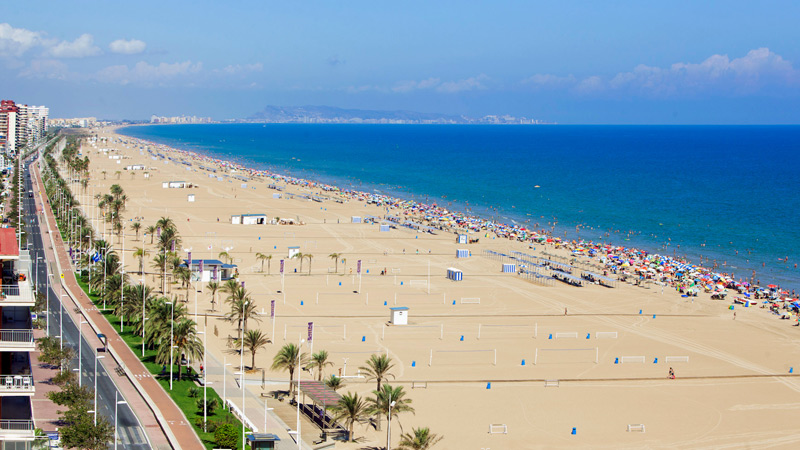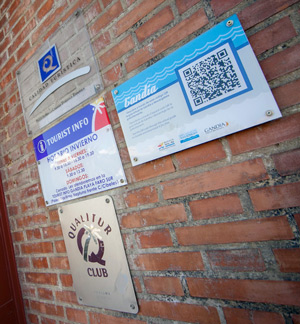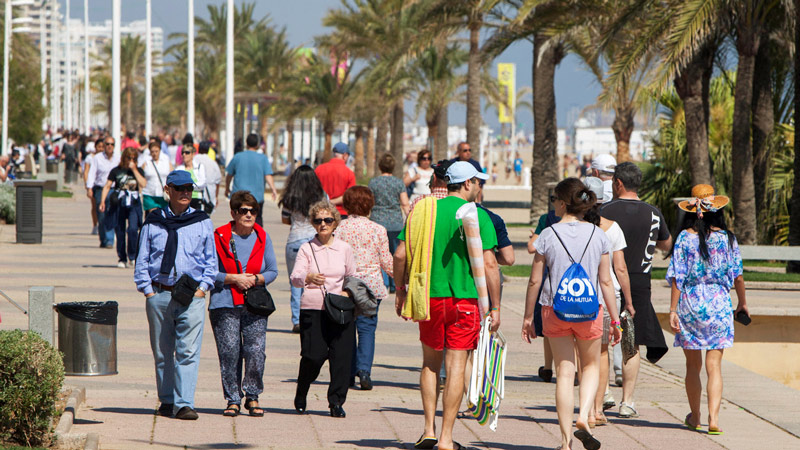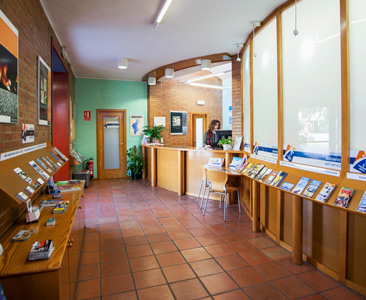Quality of service is an important component of the tourist experience. The staff at Gandía Town Hall have long been sensitive to projects related to the quality of their services, as evidenced in their 1993 Plan de Dinamización y Excelencia Turística for the revitalization and excellence of tourism. One of the objectives of the plan was to transform more “mature” seaside resorts, such as Gandía, into quality tourist destinations.
Standards are a strategic ally in such endeavours, helping to ensure work is carried out in line with accepted best practice. One such standard is ISO 14785, Tourist information offices – Tourist information and reception services – Requirements, which contributes to enhancing a resortʼs image and the human interaction with visitors.
The standard grew out of the work of technical committee ISO/TC 228, Tourism and related services, an international forum of 84 countries – led by Spainʼs national standards institute AENOR, ISO member for the country, in collaboration with INNORPI (Tunisia) – which finds consensus on the best way to deliver tourist-related services. This has resulted in over 20 standards that help public and private organizations improve their tourist services in such areas as diving, thalassotherapy, protected natural environments, adventure tourism, and marinas. Always happy to serve, the Department of Tourism at Gandía Town Hall tells us how the city spruced up its act with outstanding results.
On sunshine coast

Gandía is set in the Spanish Community of Valencia, a region that enjoys a long tourist tradition, averaging 6.2 million visitors a year from all over the world – approximately 10 % of all international tourist visits to Spain. The city has a stable off-season population of 80 000 inhabitants, which doubles each summer thanks to its festivals and renowned Valencian cuisine, notably its “fideuà de Gandía” or seafood noodles.
With a vantage point on the Mediterranean Sea, over 300 sunshine days a year and an average annual temperature of around 20 °C, Gandía can lay claims to being Valenciaʼs first tourist destination. The city also boasts a rich historical and cultural legacy linked to the Duchy of Borja (and its fourth duke, San Francisco de Borja), classic Catalan writers the likes of Ausiàs March or Joanot Martorell, author of the chivalric romance Tirant lo Blanc, as well as an interesting natural heritage featuring 7.5 km of coastline.
In Spain, where tourism generates 11 % of the countryʼs GDP and contributes directly to the creation of one in nine jobs (Ministry of Industry, Energy and Tourism, 2014), there can be no doubt as to the importance of tourism in driving the regionʼs economic growth, particularly in a small tourism-oriented town like Gandía. Whatʼs more, in an increasingly globalized world where all beach destinations boast similar natural resources and keeping ahead of the competition is increasingly difficult, the foremost task of local authorities is to create unique added-value services that will help position the resort in the marketplace.
Giving beaches a boost

Capitalizing on its assets, Gandía embarked in 2002 on a journey to certify the management of its beaches, the resortʼs key resource. Proud of its achievements, the city decided to have its work validated using the tools available on the world market, which included management system standards ISO 9001 and ISO 14001, the European EMAS (Eco-Management and Audit Scheme) and ISO 13009 for beaches operations, based on Spanish standard UNE 187001:2011.
These certifications, which are applicable to beach services and reviewed yearly by AENORʼs technical experts, have helped Gandía ensure the sustainable management of its beaches as well as safe and high-quality services. More importantly, they signal a public commitment to continuous improvement.
Tourism with a smile
Then, in 1993, Gandíaʼs three local tourist offices were integrated in the Tourist Info Network of the Community of Valencia, a professional body comprising some 200 agencies, to create a homogeneous view of the services offered, both in terms of facilities and assistance rendered by staff, who were given sector-specific training.
With such credentials, the only thing missing to round off its quality service offering was a formal endorsement of the cityʼs tourist information centres. At this point in time, Tourist Info Gandía was invited by the Consellería de Turismo, Valenciaʼs Regional Department of Tourism, to join the Quality Committee, established to carry out a preliminary diagnosis and any subsequent studies and training. This led to the cityʼs tourist offices being audited by AENOR and certified to UNE 187003:2008, later to be replaced by UNE-ISO 14785:2015 for tourist information and reception services. Conformity to the standard earned them the “Marca Q” for quality tourism, granted by Spainʼs Instituto de Calidad Turística Española (ICTE).
The implementation of ISO 14785 – and ensuing certification – meant developing key documentation and bringing part of the office infrastructure up to par. Yet our foremost asset was being able to count on the staffʼs unfaltering commitment and enthusiasm throughout the entire process.

During the implementation period, Gandía was coached by the Consellería de Turismo, which also had a hand in upgrading the office space. Moreover, the authorities enjoyed fruitful collaboration, discussions and exchanges with personnel from other tourist offices, as staff members learned from each otherʼs individual expertise to increase proficiency across the board.
Broadly speaking, the framework document underpinning the system is the Quality Manual, which specifies general directions and requirements for a quality service with regard to the communication materials and facilities. That was also the time when control logs were brought in, to monitor and review the quality of service in all areas. Other useful monitoring tools were the satisfaction surveys, customer suggestion box and a procedure for processing complaints.
Room for improvement
Once the system was fully in place, Gandíaʼs tourist information service was certified in 2008 to Spanish standard UNE 187003. Whatʼs more, staff from the Tourist Info Network started to take an active part in the work of ISO/TC 228ʼs working group 3, which would eventually lead to the current ISO 14785:2014, based largely on the Spanish standard and experience.
From that moment on, management and staff continued to work together to improve the system, adapting to the changes of the ISO standard. The process involves compiling a report of the work carried out during the year, organizing improvement group meetings – and formulating goals for improvement – and planning annual internal audits.
The benefits of the system can be assessed on two levels. Firstly, from a customer perspective, the service delivery was improved to the extent where the procedures now give staff the guidelines and tools they need to stock up on information materials early, in anticipation of customer demand, making service more efficient. Secondly, from an organizational perspective, staff members now attend training courses and the improvement groups have become ideal forums for sharing plans and improvement actions.
The infrastructure of excellence

Infrastructure is a big part of good customer service. With ISO 14785, facilities are subject to continued review and maintenance to ensure they remain in peak condition and any non-conformities, detected in the course of a dayʼs work or during routine inspections, are mitigated.
Equally important is the type of software used, most of which was provided by the Consellería de Turismo, making it possible to collect and update information in a formal and systematic manner.
Excellence in terms of tourist information is about satisfying customersʼ expectations. ISO 14785 has ensured that facilities are accessible to all as well as being functional and attractive, and that staff is equipped to be operational and efficient – a pledge to continuous improvement that guarantees excellence.
Delivering information is the essence of tourism reception. This is done in a variety of ways – through advertising, in print and digital format, via postal mailings, by e-mail or by phone. But the channel that adds the most value is the tourist information officer, the friendly face that greets visitors and strives to always give satisfaction. For this very reason, getting our service certified is first and foremost a token of recognition for all the tourist professionals who do the job each day.

